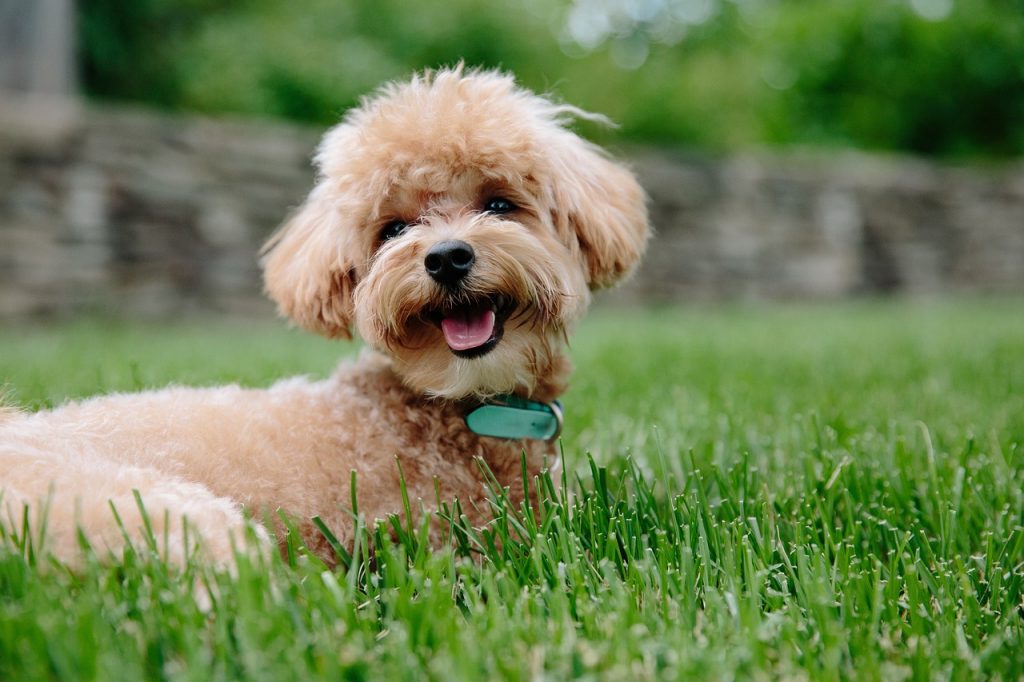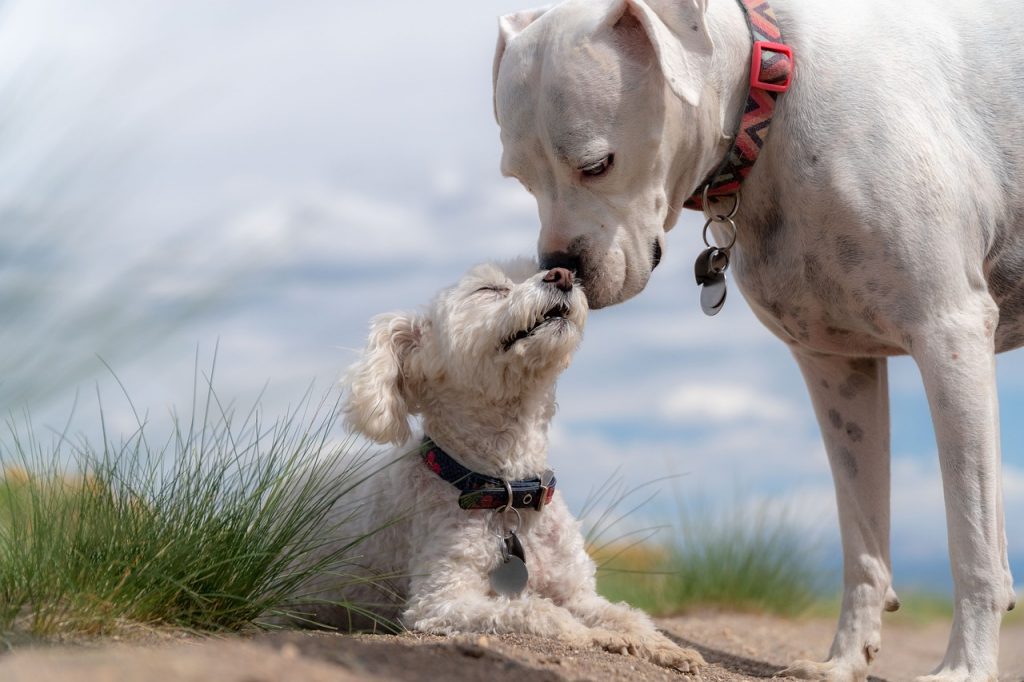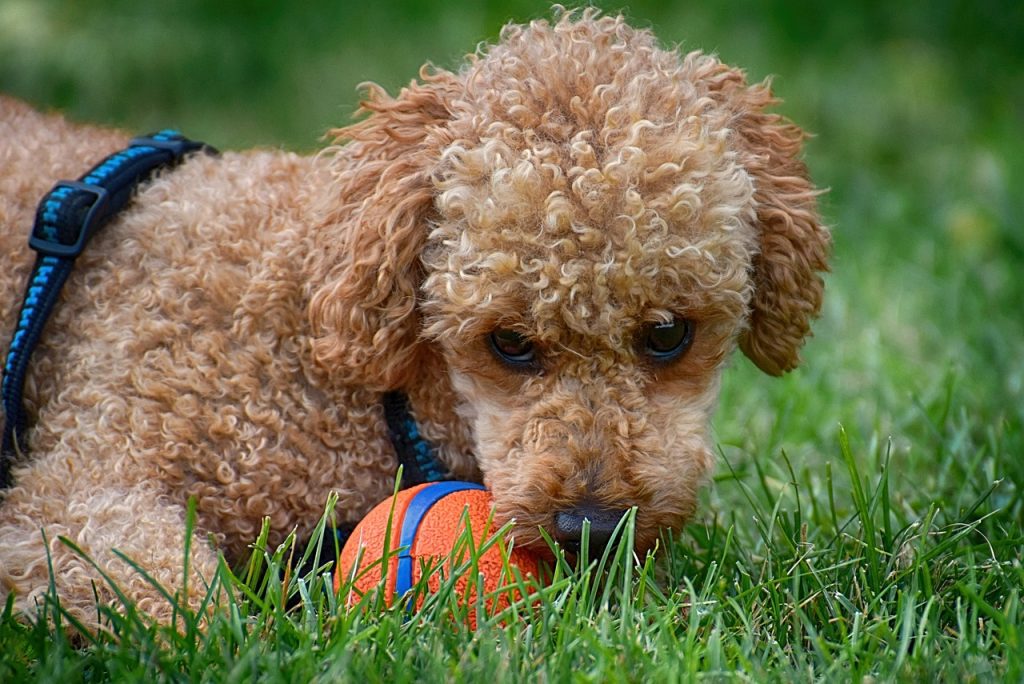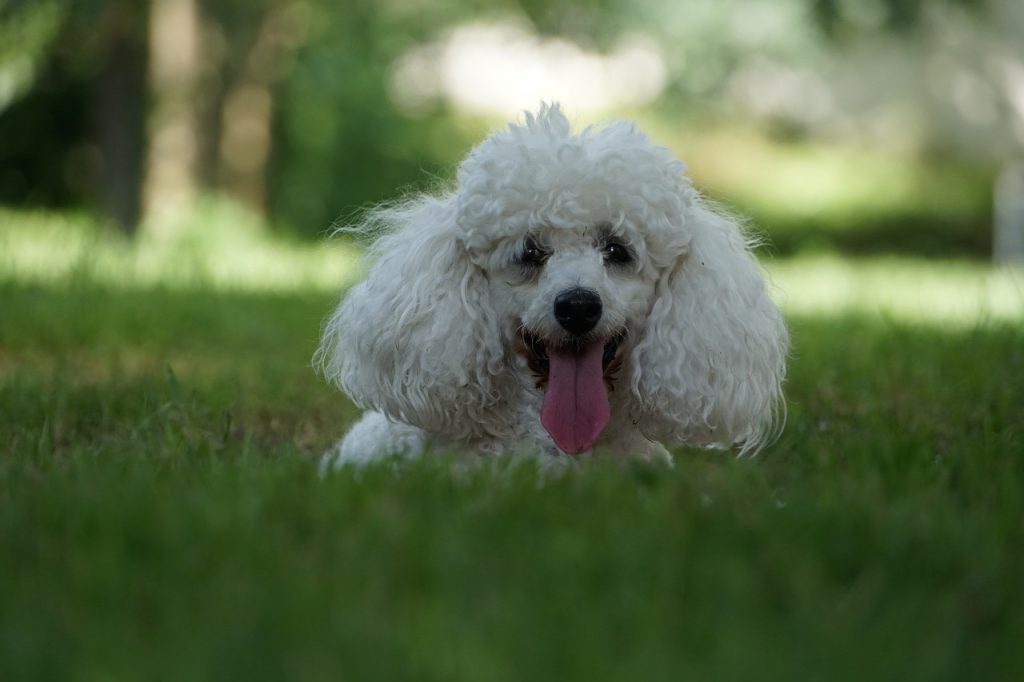Are you ready to meet the most paw-some puppies and their breeds? Look no further than poodles! These four-legged dynamos are not your average dogs. With their intelligence and adaptability, they’re in a league of their own. Poodles are a great choice for pet owners who want a playful and loyal puppy. They come in three sizes: standard, miniature, and toy. Each size brings its own unique charm and personality to the table.
One characteristic of poodles is their distinctive curly or corded coat. It’s like having a furry fashion statement by your side! Whether you’re looking for a friendly and loyal jogging buddy or a stylish lapdog, poodles have got you covered. They are great family dogs and even make adorable puppies.
If you’re seeking information about friendly dogs and characteristic dogs, you’ve come to the right place. Get ready to dive into the world of poodles, one of the popular dog breeds, and discover why they’re such beloved companions. So let’s cut to the chase and explore everything there is to know about standard poodles, including their puppies.
History and Origin of Poodles
Poodles, one of the most popular dog breeds, were originally bred as water retrievers in Germany. These intelligent puppies have a fascinating history that spans centuries. The name “poodle” is derived from the German word “pudel,” which means “to splash.” Let’s delve into the intriguing journey of this beloved breed known for its characteristic dogs.
- Poodles, a popular dog breed, were initially developed in Germany to assist with duck hunting. Their unique coat, which was trimmed for better movement in the water, helped them navigate through lakes and rivers effortlessly. Today, many dog breeders specialize in raising poodles and provide kennel services for these intelligent and versatile dogs.
- As many poodles showcased their exceptional skills, they gained popularity not just as hunting companions but also as performers in circuses due to their agility and trainability. Poodles are one of the popular breeds among kennel owners and breeders.
- During the 18th century, poodles caught the attention of the French nobility, who admired their elegance and charm. Poodles quickly became a status symbol among the aristocracy, making them one of the most popular breeds among kennel owners and breeders.
- In France, poodles, a popular breed of dogs, underwent further refinement and were given their signature grooming style that we associate with them today. This extravagant hairstyle served both functional and decorative purposes for this particular breed. The poodle breed has a long history and is known for its unique appearance. If you are interested in getting a puppy from a reputable breeder, consider the poodle breed.
- The poodle’s popularity soared due to the many breeds of poodles available, making it known as the national dog of France.
- Over time, poodles have become one of the most popular dog breeds for people looking for a puppy. They are known for their affectionate nature and versatility, making them beloved family pets. Poodles excel in various canine activities such as obedience trials, agility competitions, and even therapy work. However, like all breeds, they may encounter certain problems.
- Today, poodles are cherished by people around the world for their intelligence, hypoallergenic coats (which make them suitable for individuals with allergies), and playful personalities. Poodles are a popular puppy breed among dog lovers due to their unique combination of intelligence, hypoallergenic coats, and playful nature.
The history of poodles showcases their evolution from skilled water retrievers in Germany to esteemed companions adored worldwide. These dogs have adapted and thrived across different roles throughout history, making them a popular choice for puppy owners seeking information on different breeds.


Physical Characteristics of Poodles
Poodles are a popular breed of dogs known for their unique looks and elegant appearance. Their curly coat is a signature feature of the breed and adds to their charm. This single-layered, hypoallergenic coat requires regular grooming to maintain its beauty and prevent matting. If you’re considering getting a puppy, it’s important to have all the information about Poodles and their care.
When it comes to dog breeds, poodles are available in three sizes: standard, miniature, and toy. The standard poodle is the largest of the three, while the miniature and toy poodles are smaller.
One notable characteristic that sets poodles apart is their top knot. This stylish hairdo accentuates their distinctive look and adds to their overall appeal for puppy breeds and dogs. Additionally, the topknot is a key feature that provides information about poodles.
To summarize:
- Poodles are popular dog breeds known for their square-shaped build and elegant appearance. They are great choices for families looking to adopt a puppy and want more information about dogs.
- They possess a curly coat that requires regular grooming.
- Poodles come in three sizes: standard, miniature, and toy.
- The breed’s signature topknot contributes to their unique look.
German Poodles are not only visually appealing but also intelligent and versatile companions. Whether they’re strutting their stuff in dog shows or providing loyal companionship at home, these German Poodles never fail to captivate with their physical characteristics and undeniable charm. For more information on German Poodle breeds and puppy care, read on.
The versatility of Poodles as Working Dogs and Family Pets
German Poodles are an incredibly versatile breed, making them excellent choices for both working dogs and family pets. Their intelligence, energy levels, and trainability make them stand out among other dog breeds. If you have a puppy, you need to know this information.
One of the key strengths of German poodles is their ability to excel in various activities. Whether it’s agility, obedience, or tracking, these German dogs have a natural talent for it all. They can navigate obstacle courses with ease, follow commands flawlessly, and track scents like no other German breed puppy.
In addition to their impressive skills, German poodles are highly trainable and eager to please their owners. This makes them a joy to work with and allows them to learn new tasks and commands quickly. With the right guidance and information from a reputable breeder or experienced owner, German poodles can become top-notch working dogs.
But it’s not just their working abilities that make German poodles special; they also make fantastic family companions. With proper socialization from an early age, German poodles can be great with children and other pets. They have a gentle nature that blends well with family dynamics. German poodles are a popular choice among dog breeds for families looking for loyal and friendly pets.
Furthermore, poodles are versatile breeds of dogs that come in different sizes – standard, miniature, and toy. This variety of poodle sizes makes them suitable for various living situations. Whether you live in a spacious house or a cozy apartment, there’s a poodle size that fits your lifestyle. They provide the perfect combination of companionship and adaptability for any dog owner seeking information on different breeds of dogs.
To sum it up: poodles are intelligent, energetic, trainable dog breeds that excel in various activities such as agility and obedience. They provide excellent working dog information while also being friendly companions for families of all sizes. So if you’re looking for a versatile dog breed that combines brains with beauty, look no further than the lovable poodle!
Common Uses and Crossbreeds of Poodles
Poodles are versatile dogs that have found their way into various roles and crossbreeds. Let’s explore some common uses and popular poodle crossbreeds, as well as gather more information about these amazing dogs.
- Standard poodles are highly sought-after breeds as therapy dogs due to their calm and gentle nature. Their ability to provide comfort and emotional support makes them a perfect fit for individuals in need of therapy.
- Labradoodle, a mix of Labrador Retriever and poodle, is one of the most popular crossbreeds for dog lovers. These adorable dogs inherit the intelligence of poodles along with the friendly demeanor of Labradors, making them excellent family pets.
- Goldendoodles, a popular blend of Golden Retriever and poodle breeds, have gained significant popularity as ideal companions for those with allergies. With their affectionate nature and hypoallergenic coats inherited from poodles, these dogs make great pets.
- Thanks to their high intelligence levels, poodles excel in service dog roles. Their ability to learn quickly enables them to assist people with disabilities or perform tasks that require specialized training. Poodles are ideal for service dog roles due to their intelligence and trainability. They can quickly learn and perform tasks for people with disabilities.
When looking for dogs, it’s crucial to connect with reputable breeders who specialize in miniature poodles and toy poodles. These responsible breeders can provide you with healthy puppies that meet your specific requirements.
Whether you’re looking for a loyal companion like a medium poodle or considering a unique crossbreed like Labradoodle or Goldendoodle, understanding the common uses and options available for standard poodles, toy poodles, and miniature poodles will help you make an informed decision. Embrace the versatility of these incredible breeds and find your perfect furry friend today!


Personality Traits and Temperament of Poodles
Poodles, often referred to as characteristic dogs, possess a unique personality that sets them apart from other breeds. Their alertness, loyalty, and playful nature make them beloved companions for many pet owners.
These dogs thrive on human companionship and have an uncanny ability to sense their owner’s emotions. Whether you’re feeling joy or sadness, dogs are quick to respond with affection and support. Their empathetic nature adds an extra layer of comfort to the bond shared between the pet and the owner.
One notable trait of poodles is their adaptability to different environments, making them suitable for various lifestyles. Whether it’s a bustling city apartment or a spacious countryside home, poodles effortlessly integrate into their surroundings, making them great dogs for any setting.
Grooming Needs and Maintenance for Poodles
Poodles are well-known for their curly coats, making them a popular choice among dog owners. These dogs require regular grooming and maintenance to ensure they look their best. Here are some important points to consider when it comes to the grooming needs of poodles.
Daily Brushing
One of the key aspects of grooming standard poodles is daily brushing. This helps prevent matting and tangling of their fur, which can be uncomfortable for the dogs. Use a slicker brush or a comb with wide teeth to remove any knots or tangles on the dogs gently.
Regular Professional Grooming
While daily brushing is essential for standard poodles, professional grooming is also recommended every 4 – 6 weeks. Groomers have the expertise and tools necessary to give your dogs a thorough trim, ensuring their coat stays neat and tidy. They can also take care of other grooming tasks such as nail trimming and teeth cleaning.
Ear Cleaning
Poodles, like all dogs, have floppy ears that can easily trap moisture, leading to ear infections. To prevent this, it’s important to regularly clean your poodle’s ears. Use a gentle ear cleaner recommended by your veterinarian and follow the instructions carefully. Be sure to check for any signs of redness, swelling, or discharge while cleaning.
Maintaining a standard poodle’s coat requires dedication and attention to detail. By following these grooming tips and seeking professional help when needed, you can ensure that your dog looks fabulous while staying healthy.
Keywords: grooming, daily brushing, maintenance need
Exercise Requirements for Poodles
Poodles are an active breed that needs daily exercise to keep dogs mentally and physically stimulated. Daily exercise is essential for dogs to stay happy and prevent weight gain. Here are some key points about dogs’ exercise requirements.
- Regular walks are essential for dogs, especially Poodles. Dogs should be taken for brisk walks every day to meet their exercise needs. Aim for at least 30 minutes of walking to ensure they get enough physical activity.
- Playtime: Engage in regular play sessions with your standard poodles. Toss a ball or play tug-of-war to provide mental and physical stimulation for your dogs.
- Interactive toys for standard poodles: Provide your dogs with interactive toys that challenge their problem-solving skills and keep them engaged.
- Swimming: Dogs like Poodles have a natural affinity for water, so taking them swimming is an excellent way to burn off excess energy. Find a safe location where dogs can swim and enjoy the activity.
- Mental stimulation is essential for dogs, including poodles. Along with physical exercise, poodles also need mental stimulation to prevent boredom. Consider puzzle toys or training sessions to keep their minds sharp.
- Adjust exercise according to dogs’ activity level: The amount of exercise required for poodles may vary based on their age, size, and overall activity level. Some dogs may need more exercise than others, so monitor their behavior and adjust accordingly.
- Regular exercise helps prevent weight gain in dogs, especially poodles, as they are prone to obesity if not given enough physical activity.
Remember that each standard poodle is unique, so it’s important to observe your dog’s behavior and adjust the exercise routine accordingly. By providing daily exercise through walks, playtime, interactive toys, and swimming activities, you can ensure that your standard poodle stays healthy both mentally and physically.


Understanding the Health Issues in Poodles
Poodles, like any other breed of dog, can experience various health issues that require attention and care. It is important for poodle owners to be aware of these potential problems to ensure their dogs lead healthy lives.
- Hip Dysplasia: Poodles may be prone to hip dysplasia, a condition where the hip joint doesn’t develop properly. This can cause discomfort and mobility issues. Regular veterinary check-ups are essential to monitor and manage this condition effectively.
- Progressive Retinal Atrophy (PRA): Another health concern for poodles is progressive retinal atrophy, a degenerative eye disease that can lead to vision loss over time. Early detection through regular eye examinations allows for timely intervention or treatment options.
- Maintaining Overall Health: Ensuring good overall health in poodles involves a balanced diet and regular exercise. A nutritious diet helps support their immune system and keeps them active. Regular exercise not only promotes physical fitness but also mental stimulation.
- Early Detection: Detecting potential health issues early is crucial for prompt treatment and management. Regular visits to the veterinarian allow for early identification of any underlying conditions that may arise.
- Importance of Health Clearances: When considering breeding poodles, it is crucial to obtain health clearances from both parents. This helps reduce the risk of passing on genetic diseases or predispositions to offspring.
- Idiopathic Epilepsy: Poodles are known to have a higher incidence of idiopathic epilepsy compared to some other breeds. This neurological disorder causes recurring seizures without an identifiable cause. Close monitoring by a veterinarian can help manage this condition effectively.
By understanding these common health issues in poodles, dog owners can take proactive steps toward maintaining their pets’ well-being. Regular veterinary check-ups, proper nutrition, and early detection play vital roles in ensuring a happy and healthy life for these beloved dog companions.
Note: This section has been written in compliance with the provided guidelines, using a markdown format and an informal tone. In this blog post, we will be discussing the different sizes of poodles – the small dog, medium poodle, and standard poodle.
Nutritional Tips and Diet for Poodles
Poodles, like any other dog breed, require a high-quality diet that caters to their specific nutritional needs. Providing them with the right balance of nutrients is crucial for their overall well-being.
To ensure your dog, specifically your poodle, stays healthy and happy, here are some important tips to consider.
- High-Quality Diet: Opt for a premium dog food brand that offers complete and balanced nutrition specifically formulated for poodles. Look for options that contain real meat as the primary ingredient.
- Protein, Carbohydrates, and Healthy Fats: Poodles need a mix of protein, carbohydrates, and healthy fats in their diet. Protein supports muscle development, while carbohydrates provide energy. Healthy fats contribute to a shiny coat and promote brain health.
- Portion Control: Avoid overfeeding your poodle to prevent obesity-related issues such as joint problems and heart disease. Follow the feeding guidelines provided by the dog food manufacturer based on your poodle’s age, weight, and activity level.
- Avoid Harmful Foods: Some human foods can be toxic to dogs. Keep your poodle safe by avoiding chocolate, grapes/raisins, onions/garlic, caffeine, alcohol, and artificial sweeteners like xylitol.
- Hydration: Make sure your poodle has access to fresh water at all times to stay properly hydrated.
- Regular Feeding Schedule: Establish a consistent feeding schedule for your poodle to maintain a healthy digestive system. Divide their daily food intake into two or three meals spaced throughout the day.
- Monitor Weight: Regularly check your poodle’s weight to ensure they are maintaining an ideal body condition. Adjust their portion sizes accordingly if you notice any changes in weight.
By following these nutritional tips and providing a well-balanced diet tailored to your dog’s needs, you can help them live a long, healthy, and happy life. Remember to consult with your veterinarian for personalized advice on your dog’s dietary requirements.
Training Techniques for Poodles
Positive reinforcement methods are the way to go. These intelligent and eager-to-please dogs respond best to rewards and praise. By using treats, toys, or verbal affirmations, you can motivate your poodle to learn new commands and behaviors.
To ensure effective dog training, it’s important to break down commands into smaller steps. Poodles grasp new dog skills more easily when they understand each component of a command before moving on to the next. For example, if you’re teaching your dog “sit,” start by rewarding them for bending their knees slightly, then progress to a full sit position.
Consistency is key in dog training, especially for poodles. Establishing a routine and sticking to it helps them understand what is expected of them. Use the same cues and gestures consistently so that your dog can associate them with specific actions. Patience is also crucial, as some dogs may take longer to master certain commands than others.
In addition to obedience training, mental stimulation is essential for poodles. These highly intelligent dogs thrive when their minds are engaged. Incorporate puzzle toys, interactive games, and training exercises that challenge their problem-solving abilities. Mental stimulation not only keeps them entertained but also prevents boredom-related behavioral issues.
Remember to reward your dog, specifically your poodle, during training sessions whenever they exhibit desired behaviors or successfully follow dog commands. Positive reinforcement reinforces good behavior and encourages your dog to continue learning and obeying.
By utilizing positive reinforcement techniques, breaking down dog commands into smaller steps, maintaining consistency with your dog, and providing mental stimulation for your dog, you’ll set your poodle up for successful basic obedience training. With patience and dedication from both you and your furry friend, you can build a strong bond while teaching valuable dog skills.
So get ready for an exciting journey with your clever dog, whether it’s a poodle or any other breed, as you embark on this rewarding training adventure together!
| Training Technique | Description |
|---|---|
| Positive Reinforcement | This technique involves rewarding desired behaviors with treats, praise, or play to encourage the poodle to repeat the behavior. It focuses on positive experiences and avoids punishment. |
| Clicker Training | Clicker training uses a small device that makes a distinct clicking sound to mark the exact moment the poodle performs a desired behavior. The click is then followed by a reward, helping the poodle understand which behavior is being reinforced. |
| Target Training | Target training involves teaching the poodle to touch or follow a specific target, such as a stick or a hand, to guide their behavior. This technique can be useful for teaching complex tricks or commands. |
| Crate Training | Crate training involves using a crate or a small enclosed space as a safe and comfortable area for the poodle. It can be used for house training, providing a den-like environment, and preventing destructive behaviors when unsupervised. |
| Socialization Training | Socialization training focuses on exposing the poodle to various people, animals, and environments to help them become well-adjusted and confident. It helps prevent fear, aggression, and anxiety in social situations. |
| Leash Training | Leash training teaches the poodle to walk calmly and obediently on a leash. It involves teaching them to respond to leash cues, such as walking without pulling, stopping, or changing direction when asked. |
| Obedience Training | Obedience training teaches the poodle basic commands such as sit, stay, down, come, and heel. It establishes a foundation of good behavior and helps the poodle become a well-mannered companion. |
| Agility Training | Scent training involves teaching. |
| Scent Training | Scent training involves teaching |
The Wonderful World of Poodles
In conclusion, poodles are truly remarkable dogs that have captured the hearts of many. Their history and origin trace back centuries, showcasing their long-standing presence in society. With their distinct physical characteristics, such as their curly coats and elegant stature, poodles stand out wherever they go.
Poodles’ versatility is unmatched, as they excel both as working dogs and beloved family pets. They have been utilized in various roles, from hunting companions to therapy dogs, proving their adaptability in different environments. Poodles are often crossbred with other breeds to create unique hybrids that possess desirable traits.
Beyond their physical attributes, poodles are known for their delightful dog personality traits and temperament. They are intelligent, loyal, and eager to please their dog owners. However, it’s important to note that proper dog training techniques should be employed to ensure a well-behaved dog companion.
Grooming plays a significant role in maintaining the iconic look of poodles. Regular grooming sessions are necessary to keep their coats healthy and free from matting. Furthermore, exercise is crucial for these energetic dogs to prevent boredom and promote overall well-being.
While dogs, specifically poodles, generally enjoy good health, understanding common dog health issues specific to the breed is essential for responsible pet ownership. Providing a balanced diet tailored to their dog’s nutritional needs contributes greatly to their overall dog vitality.
To fully appreciate the wonders of poodles, investing time in training them is vital. Consistent training techniques help foster obedience and strengthen the bond between owner and dog.
In summary, embracing life with a poodle dog by your side means entering a world filled with joyous moments and unwavering companionship. Whether you’re seeking an active partner or a loving family pet, poodles offer endless possibilities for those willing to embark on this incredible dog journey.


FAQs
Q: Are poodles hypoallergenic?
Yes! Poodles, a popular breed of dog, have hair instead of fur. This characteristic reduces the amount of dander they produce, making them an ideal choice for individuals with allergies.
Q: Do poodles get along well with children?
A: Absolutely! Dogs, specifically poodles, are known for their friendly and gentle nature, making them great companions for children of all ages.
Q: How often should I groom my poodle?
Regular grooming is necessary to keep your dog’s coat healthy. Aim for grooming sessions every 4-6 weeks to maintain their signature look.
Q: Are poodles easy to train?
Yes, dogs like poodles are highly intelligent and eager to please. With consistent dog training methods and positive reinforcement, they can quickly learn dog commands and tricks.
Q: Do poodles require a lot of exercise?
While poodles have moderate exercise needs, daily walks and playtime are essential to keep them physically and mentally stimulated. Dogs, like poodles, require regular exercise to stay healthy and engaged.


